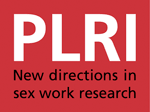Using mathematical modelling to estimate the impact of periodic presumptive treatment on the transmission of sexually transmitted infections and HIV among female sex workers.
In settings with poor sexually transmitted infection (STI) control in high-risk groups, periodic presumptive treatment (PPT) can quickly reduce the prevalence of genital ulcers, Neisseria gonorrhoeae (NG) and Chlamydia trachomatis (CT). However, few studies have assessed the impact on HIV. Mathematical modelling is used to quantify the likely HIV impact of different PPT interventions. METHODS: A mathematical model was developed to project the impact of PPT on STI/HIV transmission amongst a homogeneous population of female sex workers (FSWs) and their clients. Using data from Johannesburg, the impact of PPT interventions with different coverages and PPT frequencies was estimated. A sensitivity

